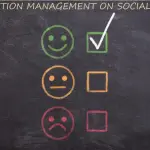McDonald’s looks like a fast food restaurant, but it’s a site of “embedded science,” writes Steven Shapin:
“[McDonald’s] sucks in huge amounts of scientific and technological expertise. Science is omnipresent in the corporation that owns or franchises this particular restaurant. Science is outsourced when McDonald’s draws on the expertise of the Marine Stewardship Council to choose the Alaskan pollock for its Filet-O-Fish sandwiches, or the US Department of Agriculture to inspect and grade the beef for its burgers, or the nonprofit Stanford Research Institute to find environmentally friendly food-packaging techniques. Science is massively deployed in the company’s food laboratories and among its technical consultancies, where standards are maintained and innovative new foods are prepared and tested. Flavor scientists devise new ingredients and combinations; sensory scientists and sociologists tweak and test proposed new menu items with individual consumers and focus groups under rigorously controlled conditions. The stability of foods is constantly monitored; preservative chemicals are obtained, and more effective ones constantly sought. Possibilities are researched to better satisfy consumer demand and to generate new demand. Test markets are located, and the results of tests are statistically processed. The design and placement of restaurants is informed by systematic studies of customer preferences and behaviors. Customer demographics and purchasing patterns are compiled and data-mined for information. Employee efficiency, motivation, turnover, and responses to various pay rates and incentives are minutely studied and assessed for their impact on corporate profitability.
Thus, “while it may appear that no science at all happens in the McDonald’s, practically everything that goes on there is saturated with science—condensed, refracted, and embedded in a commercial enterprise that we rarely think of in association with late modern science and that many people might even consider to be inimical to the methods and findings of legitimate science.”
Shapin’s point extends beyond the McLab. Most science, he points out, doesn’t occur in the places we imagine science to be located. Science is all-pervasive: “Most [science and engineering, S&E] workers are not to be found in institutions such as Harvard or MIT or, indeed, in research universities. About 70 percent of this work force is employed in the business sector. Government (federal, state, and local) employs 11 percent, and educational institutions (of all sorts) employ only 19 percent. Less than a half of the S&E workers in education are in four-year institutions, and S&E specialists, like higher-education teachers in general, typically work in two-year community colleges or other educational institutions where research isn’t a priority.”
This doesn’t fit the popular image of science, perhaps; nor the vision of science among academics. Shapin writes, ” So far as the great majority of historians, sociologists, and philosophers are concerned, science stops being science—and places itself largely outside their domain of interest—precisely when it becomes embedded in the modern institutions of government, production, and, to a lesser extent, war. The study of science-in-industry, for instance, is most commonly handed over to economic and business historians, whose concern is often to work out ‘best practices’ for how corporate research is to be managed, how it is to be costed and its benefits assessed—not to describe the realities of its role and management.” This manifests a value judgment about the superior value of “pure science” to impure technology or business-oriented science.
To which Shapin has said, at length, that science is Never Pure.










